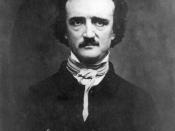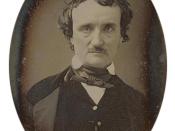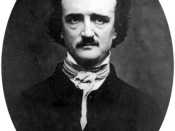Any poem respected by Edgar Allan Poe to the extent that he would include it in his personal explanation of poetry should be exceptional, but 'Bridge of Sighs' by Thomas Hood is with certainty the best poem I have ever read. A reflective work, it tells the story of a young woman without a love in the world, but suggests there was a passion behind her dramatic suicide. The narrator blames the girl's self-destruction on her being a fickle woman, 'One of Eve's family' (l. 27)and implies that her death was spurred by incredible loneliness. He admonishes the man who finds the body of this Ophelia ignore her sins, and simply admire her beauty and bravery, and pity her bad lot in life.
In the first 2 stanzas, each alternating 3- and 2- foot lines with an 'abab' rhyme pattern, the narrator uses a steady and simple rhythm to establish the somber, introspective mood of the poem.
A feeling of pity for the beautiful but obsessive subject is set. Every line of the poem is begun with a single trochaic foot, with iambs completing the line. This emphasizes the first syllable, and I feel, gives a driving force rather than a rolling tune to the poem.
The next stanza first hints at the nature of the woman's death, describing her sodden clothes. 'Take her up instantly,/Loving, not loathing.--'(ll.13-14) says the narrator, asking the finder of the body to feel only warmth for this poor girl. These two lines prepare the reader for the next two stanzas, which exhort the discoverer of this cadaver to not focus on 'her mutiny' and sin in suicide, but admire her loveliness and 'Think of her mournfully,/Gently and humanly;' (ll. 16-17). The rhyme scheme of these longer stanzas is irregular but lyrical and leads neatly...


